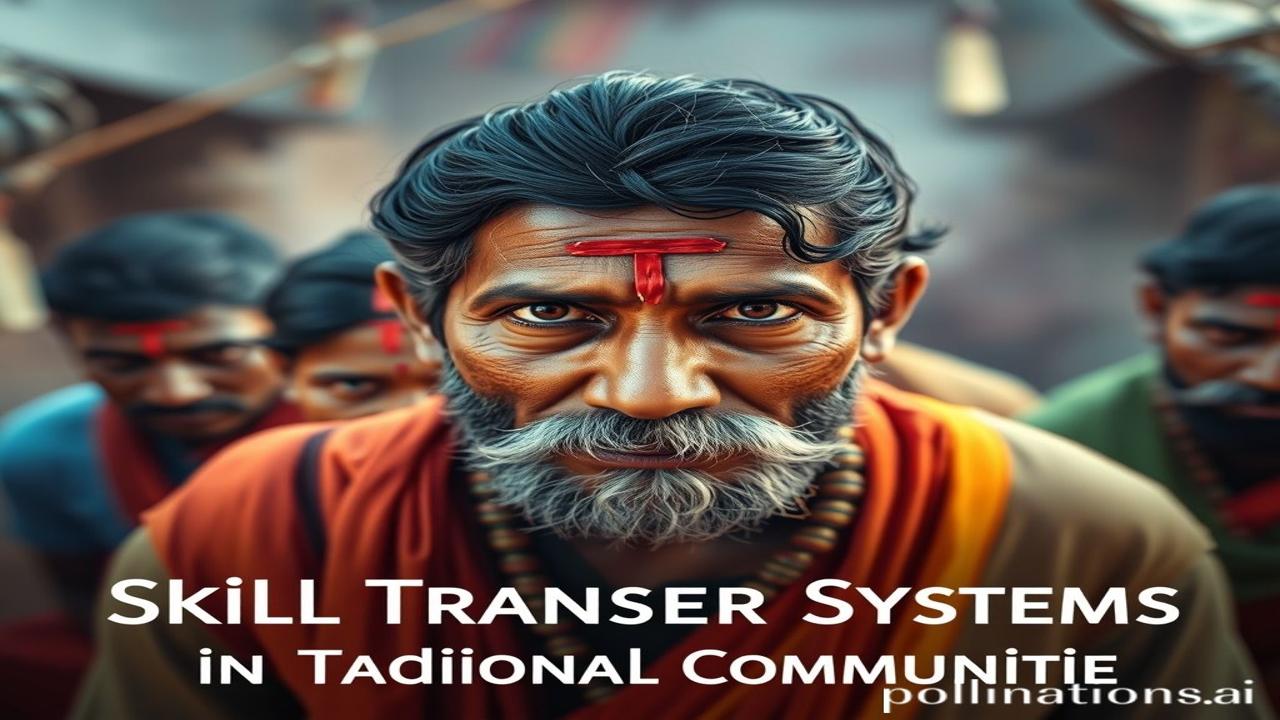Waqt Ki Dhool Mein Chhupe Hunar: Traditional Skill Transfer Systems in India
Kabhi socha hai, jab school nahi hua karte the, jab YouTube ya online courses nahi the, toh log kaise seekhte the? Kaise ek potter apne bete ko chaak chalana sikhata tha? Kaise ek weaver apni beti ko resham ke dhaage se zindagi bunna sikhata tha? Waqt ki dhool mein kuch aisi hi kahaniyan chhupi hain, humare purano ke skill transfer systems ki. Let’s dive in!
Itihaasic Prishthbhumi: Skills Transferred Aur Sanskritic Miras
Skill transfer systems, matlab hunar ek generation se dusri generation tak pahuchane ka tareeka, India mein koi nayi baat nahi hai. Yeh to humari history aur culture ka ek important hissa hai. From the Indus Valley Civilization (around 3300-1700 BCE) where specialized craft production was evident, to the Mauryan Empire (322-185 BCE) with its guilds, skill transfer has always been a crucial element for societal growth and survival.
Think about it – kheti (agriculture), weaving, metalwork, woodwork, medicine (Ayurveda) – yeh sab skills bina kisi formal schooling ke generations tak pahunchti rahi. Gurukul system mein bhi sirf religious knowledge hi nahi, practical skills bhi sikhaye jaate the. Yeh sirf education nahi thi, yeh ek jeevan shaili thi.
Zameeni Sach – Log Aur Jeevan: Hunar Ki Daastaan
Imagine a village in Rajasthan centuries ago. Ma Lakhi, ek Rajputana mehel mein, ek sandook (chest) ko bharne ke liye kapde ke upar complex aari aur zardozi ka kaam kar rhi thi. Woh apni beti, Devi, ko apne bagal mein bithati, dhaage ko pakadne, needle ko chalaane aur embroidery ke design ko samajhne mein help karti.
“Dekh Devi,” Ma Lakhi kehti, “yeh sirf dhaaga nahi hai, yeh hamari parampara hai. Issmein hamare purvajon ka hunar hai. Isse hamesha sambhalkar rakhna.”
Meanwhile, baba Ram, ek carpenter, apne bete, Mohan, ko lakdi (wood) ko sahi angle se kaatna sikhate hain. Mohan aari ko pakadne mein struggle karta hai, par baba Ram patience se samjhate hain, “Dheere dheere beta. Hamesha lakdi ki baat suno, woh khud batayegi use kaise treat karna hai.”
These were not just lessons; they were a rite of passage. The rulers of the time encouraged these systems, as skilled artisans contributed to the kingdom’s wealth and reputation. Dancers learned from their mothers and grandmothers, warriors learned from their fathers, and farmers learned from their elders.
Dharohar Aur Pehchaan: Aaj Bhi Zinda
Aaj bhi, in skill transfer systems ki echoes humare desh mein sunayi deti hai. Think about family-run businesses, traditional craft villages, or even the passing down of culinary skills in families. Banarasi sarees ki weaving, Lucknowi chikan embroidery, Mysore silk weaving – these skills are often passed down through generations within specific families and communities.
Yeh sirf hunar hi nahi hai, yeh ek pehchaan hai. It is a way of connecting with our roots, of keeping our Bharatiyata alive. Yeh parampara, yeh dhrohar hume yaad dilate hain ki hum kahan se aaye hain aur hum kya ban sakte hain.
Mazedaar Tathya Ya Bhram-Bhanjak: Realities Check
Log samajhte hain ki purane skill transfer systems sirf lower castes ya specific communities tak hi seemit the. Lekin asli sach yeh hai ki yeh systems har level par exist karte the – even in royal families, skills like swordsmanship, diplomacy, and statecraft were passed down through generations. Also, yeh misconception bhi hai ki yeh systems inflexible the. In reality, there was always room for innovation and creativity within the framework of tradition.
Drishya Aur Bhavanaein: Sensory Overload
Imagine the smell of wood shavings in baba Ram’s workshop, mixed with the earthy scent of the village. The feel of rough cotton against Mohan’s skin as he sweats, learning his trade. The echoing sounds of the loom in Ma Lakhi’s home, interwoven with her gentle instructions to Devi. The warmth of the sun on their faces as they work, connected to their ancestors and to each other.
Antim Vichar Ya Uddharan: Food For Thought
Yeh purani skill transfer systems hume kya sikhati hain? They teach us the importance of community, of mentorship, of patience, and of the value of tradition. They remind us that true education is not just about acquiring knowledge, but about acquiring skills that can sustain us, connect us, and give our lives meaning.
“कला सत्यम शिवम् सुन्दरम्” – Kala Satyam Shivam Sundaram – Art is Truth, Goodness, and Beauty. May we all strive to preserve and pass on the art that makes us human.
